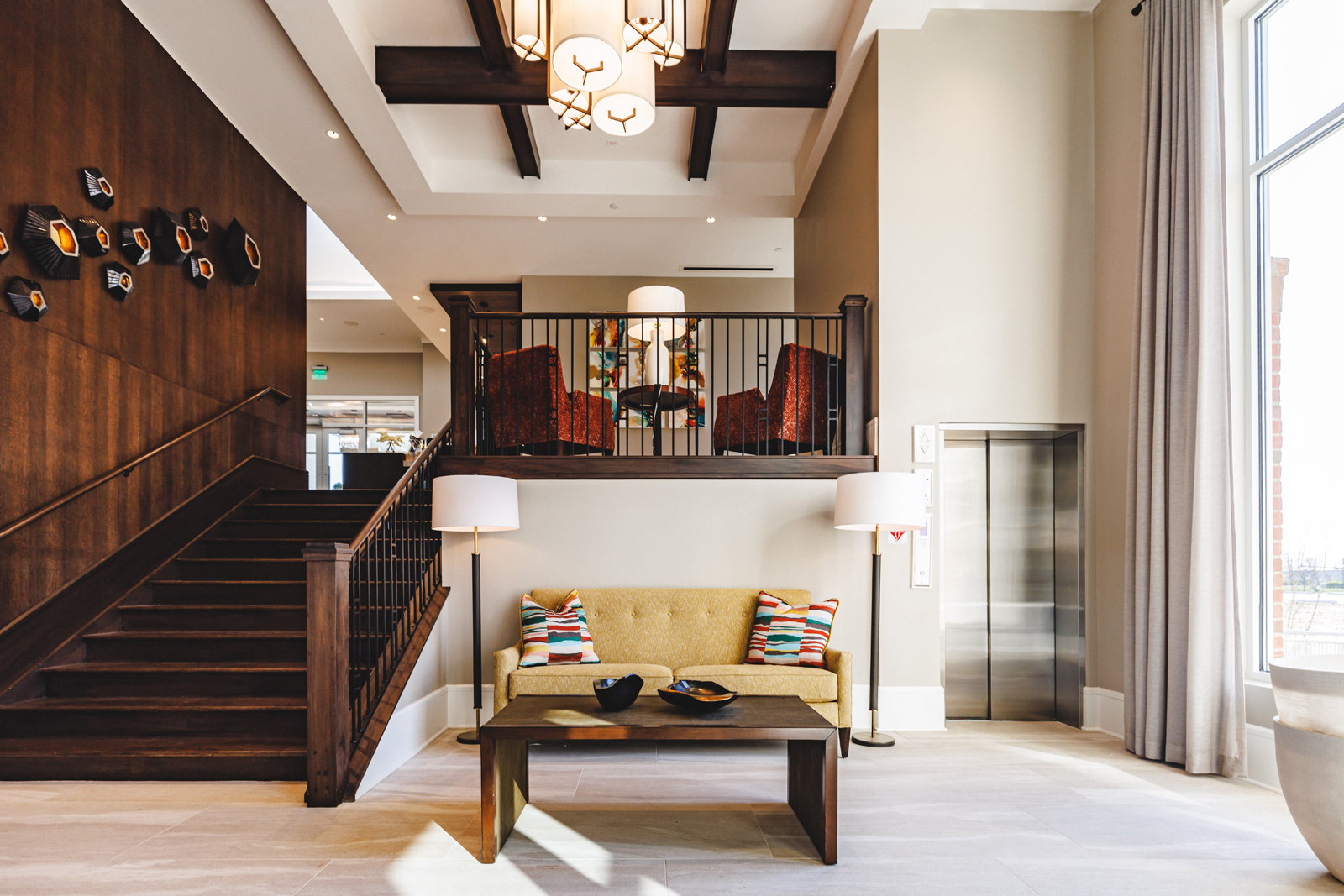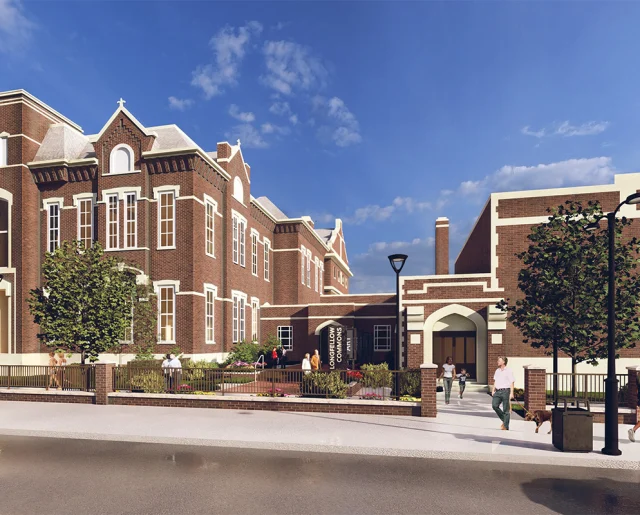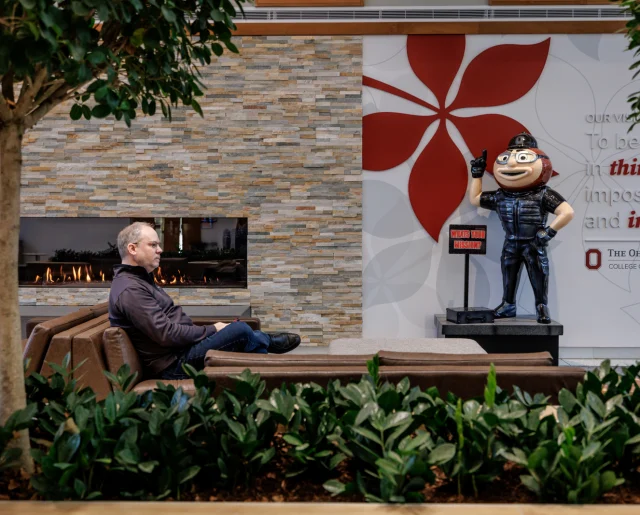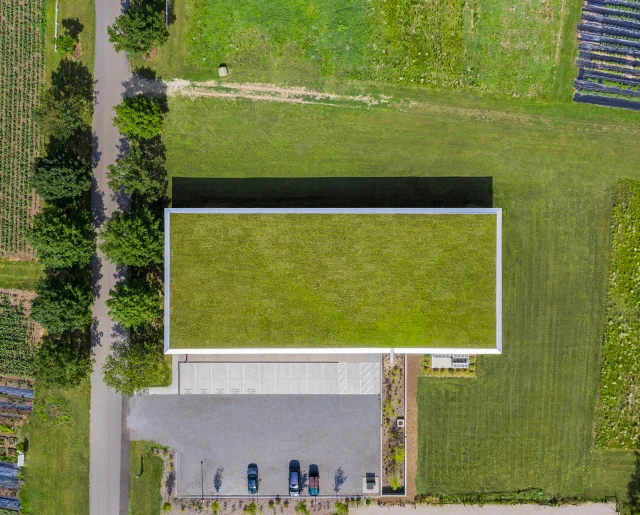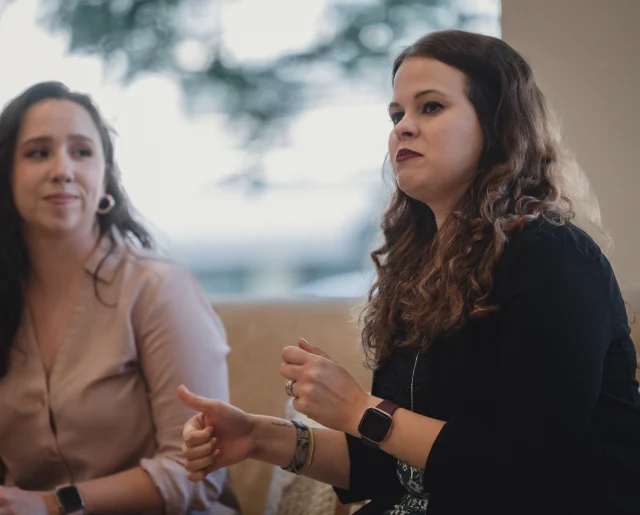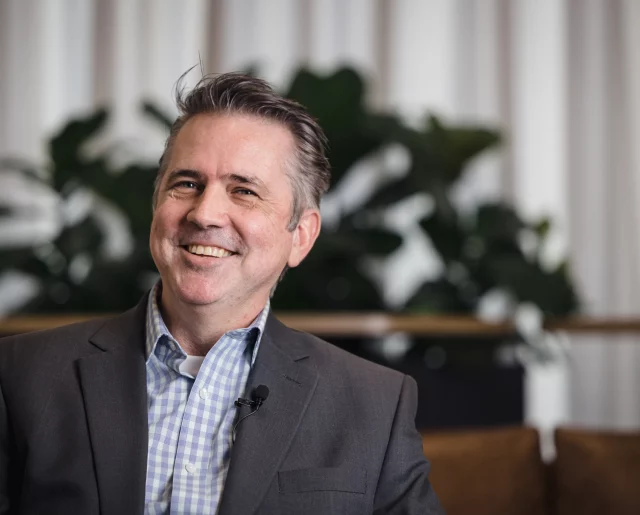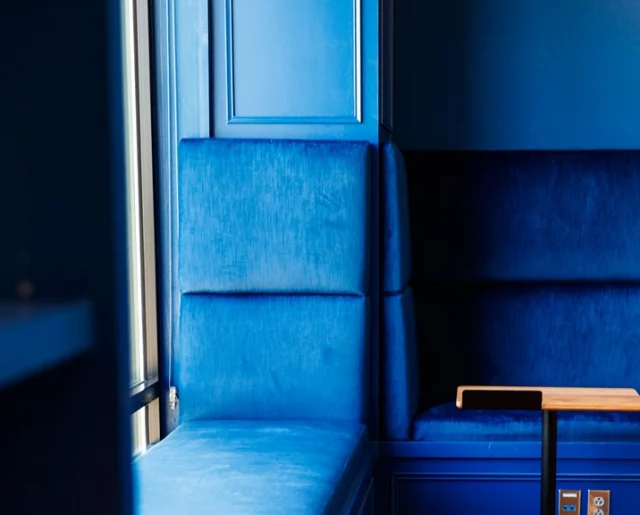The Verena at Hilliard, First Senior Living Community in Ohio to Become Fitwel Certified

We are proud to announce that we have achieved our first Fitwel Certified project at MA Design! The project, The Verena at Hilliard, is a senior independent living community with 150 units, and a clubhouse on 58 acres of land. MA worked with the developer Green Courte Partners (GCP) and property manager, MLC Services, to renovate and complete this project after it stood unfinished for over 10 years. Not only is this MA’s first project to obtain this certification, it is the first senior living community in Ohio to be Fitwel certified. We are proud to say that our client achieved all strategies that we submitted for certification, achieving a 1-star Fitwel rating.
The MA team consisting of Jessica Glorius-Dangelo, Kris Hemeyer and Cameron Guthrie with assistance from Ben Payne, who led the architectural project worked with GCP and MLC Services to successfully achieve the certification after the project was already completed.
We asked the team to tell us more about Fitwel and the project.
What is Fitwel?
Fitwel was launched by the Centers for Disease Control and Prevention (CDC) and General Services Administration (GSA) in 2016. It is focused on the health and wellness of building occupants. The points on the scorecard are weighted based on how much impact the strategies have on occupant health. The Senior Living scorecard is new, as it only came out at the end of 2020.
Why might a client pursue Fitwel instead of WELL?
One of the reasons we love Fitwel is because it is more obtainable for many of our clients. This is due to no prerequisites, no required third-party verification, and cost-effectiveness.
Prerequisites:
When it comes to achieving certification, WELL has prerequisites as well as optional credits. Meanwhile, Fitwel has no prerequisites, which allows the client to select the strategies that will work best for them to achieve their wellness goals.
Third Party Verification:
WELL requires 3rd party verification and testing after construction and occupancy, whereas Fitwel does not.
The Cost of it All:
The other significant difference between these two particular certifications is the cost of registration, certification, and construction. Generally, WELL is significantly more expensive in each of these categories.
Why would a senior living community want to become Fitwel certified?
By pursuing Fitwel, our client was able to use science-based strategies to improve their community. As a result of the COVID-19 pandemic, health and wellness surged to the forefront of the public eye. Fitwel strategies provide guidance for various aspects of the built environment and beyond for how to establish and implement a healthy living reality. In addition, Fitwel strategies push our clients outside of their comfort zone to provide many other physical, social, and emotional health benefits.
Some of our favorite features from the Verena at Hilliard:
- Public library attached to the building, which provides great access for the residents!
- Walking path surrounding a pond, within ¼ mile of the residences
- Bocce ball court, putting green, outdoor fire pit, and a fruit and vegetable garden (among other great features) that provide an excellent opportunity for the residents to socialize out in the fresh air.
- Both water stations and sanitizing stations are situated throughout the building, particularly in places with high levels of socialization and/or exercise. This helps to ensure hydration and cleanliness.
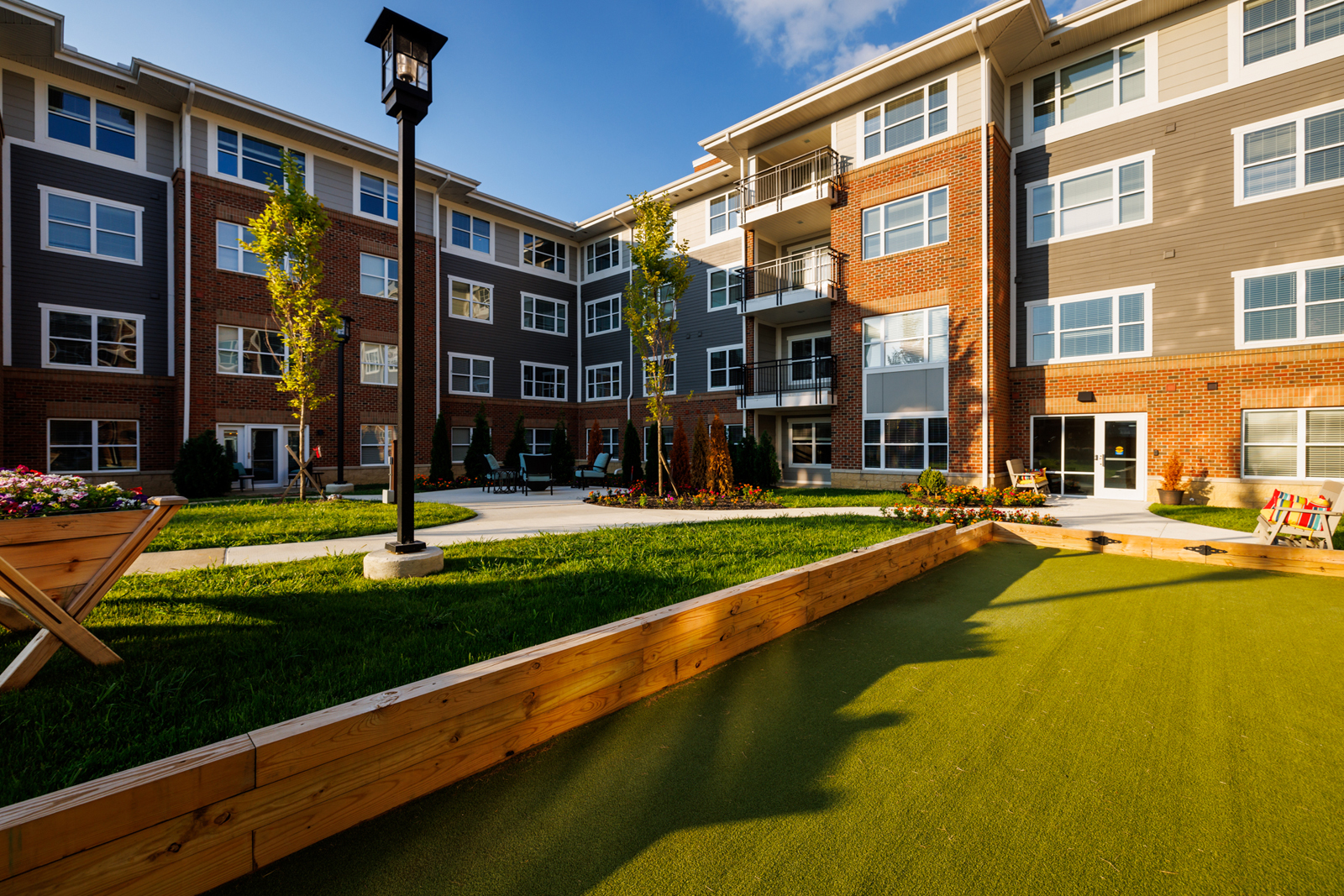
What challenges did you face throughout the certification process?
Certification After Construction Completion
Fitwel has two pathways for certification: design and built. We worked for about a year to complete the built certification. There were many things that had to be added to the project to meet Fitwel standards. For example, the property has a pond nearby, that our project team wanted to count as a walking path. However, in order for it to count, the client had to put in a stretch of sidewalk around it to complete the “loop” the certification wanted.
It is always easier to include green and healthy building strategies as part of the design process rather than after a project is built. We made it work as a team with our client!
Senior Living Scorecard
Generally speaking, the senior living scorecard has different requirements depending on whether the facility is independent living, assisted living, or a memory care community. However, there were a few requirements that weren’t flexible enough for an independent living facility.
One example of this is that The Verena has a beautiful dining facility that checks almost all the boxes – except for the number of meals offered per day. The Fitwel strategy calls for three meals per day to be provided in the facility. The Verena offers only two. As an independent living facility, each residential unit has their own kitchen. Recognizing that the ability to cook their own meals is essential for fostering a sense of independence for residents, offering three meals a day in the dining room is not provided. While Fitwel was not able to accommodate our request for only two meals a day for the strategy, we are hopeful that they will consider this in future iterations of the scorecard.
Part of a Whole Picture
The Verena employed a variety of policy-driven strategies. As part of a larger property management company, True Connection Communities, we encountered specific policies that required careful consideration. Our approach was to find solutions that would align with both the unique needs of The Verena and the broader goals of True Connection Communities. These solutions were carefully tailored to ensure they were compatible with the immediate community while being mindful of the scalability and readiness of the larger property management company for wider implementation.
Is there a benefit to having an architect do the process?
We believe there is a benefit, for sure. Our MA team had architects and designers on board who were able to consider the building and drawings from a holistic lens. Our knowledge of accessibility guidelines came into play a few times on this project. We were able to advise GCP and MLC on the best ways to implement certain strategies to satisfy both Fitwel and accessibility requirements.
MA has two Fitwel Ambassadors on staff, Jess Glorius-Dangelo and Kris Hemeyer. An architecture background is not required for becoming a Fitwel Ambassador. However, having a Fitwel Ambassador on the project provides an advantage to the client, as it reduces the length of the review process significantly, from 16 weeks down to 12.
The Fitwel standard is not just for the residents, but also for the staff who work there. Fitwel strategies help to ensure a healthier and more supportive workplace. The senior living scorecard has a number of policy strategies aimed towards supporting the staff, such as leave for all employees, access to on-site fitness facilities, support services (transportation, identity groups, etc) and employee retention plans, to name a few.
The project will have to recertify every three years. This helps to ensure that the community maintains the levels of health and wellness for years to come. This is a great selling point to anyone that wants to live in a healthier environment.
If you’re interested in discussing the potential of Fitwel Certification for your upcoming project, please don’t hesitate to contact me at jessicagd@designwithma.com. Our dedicated team would love to assist you in exploring this exciting opportunity!
